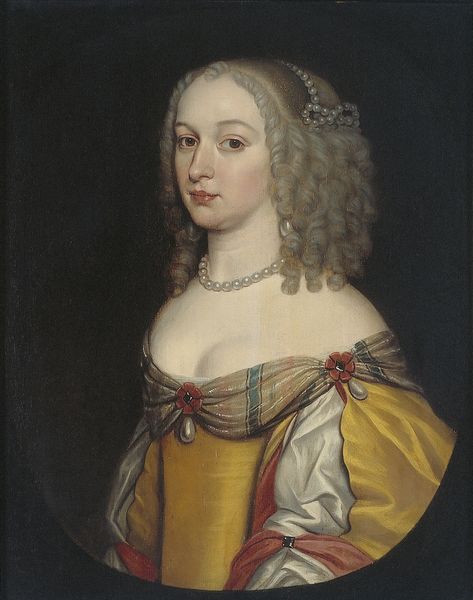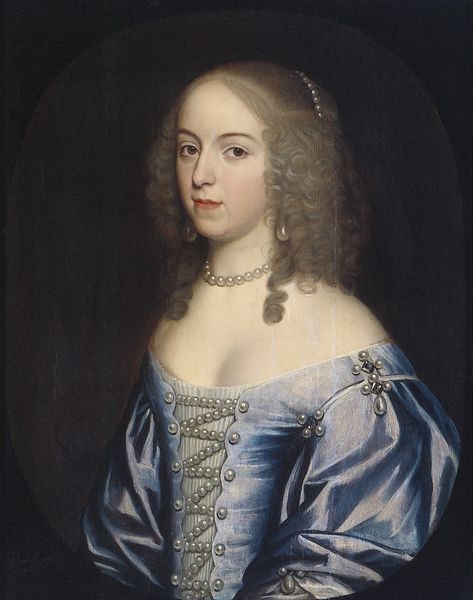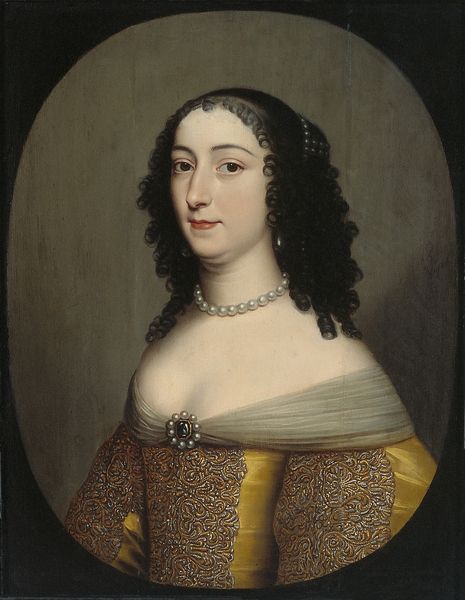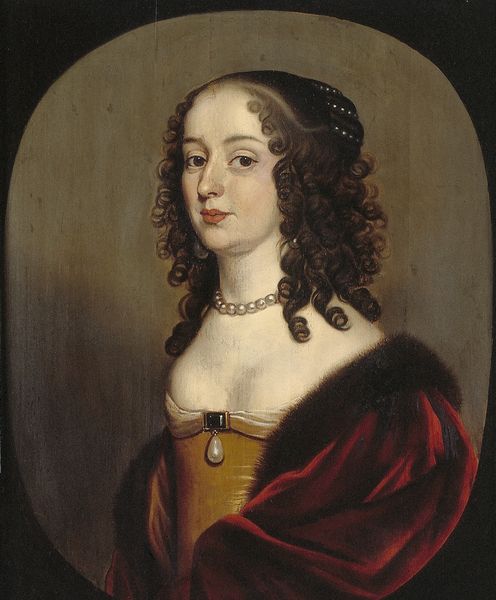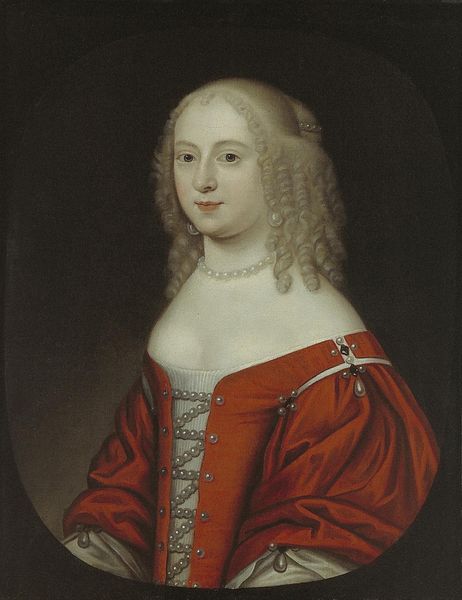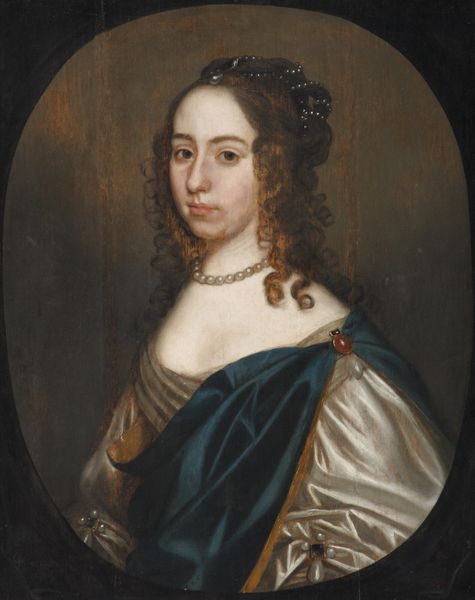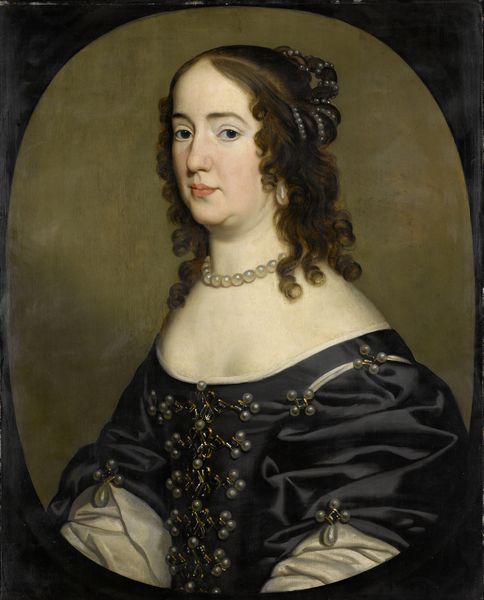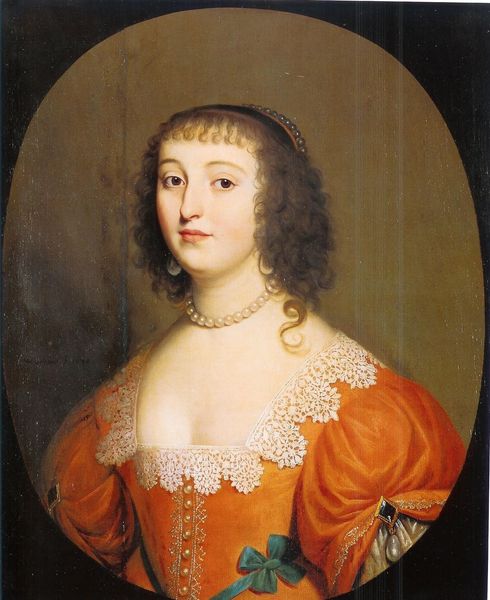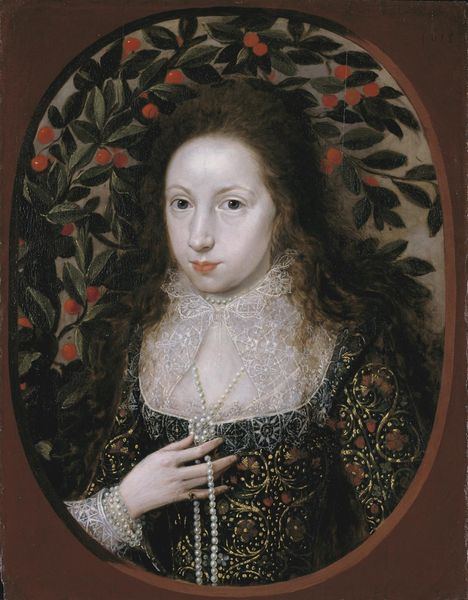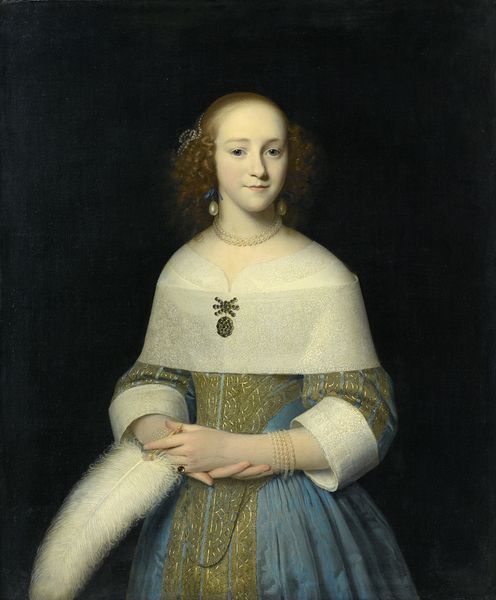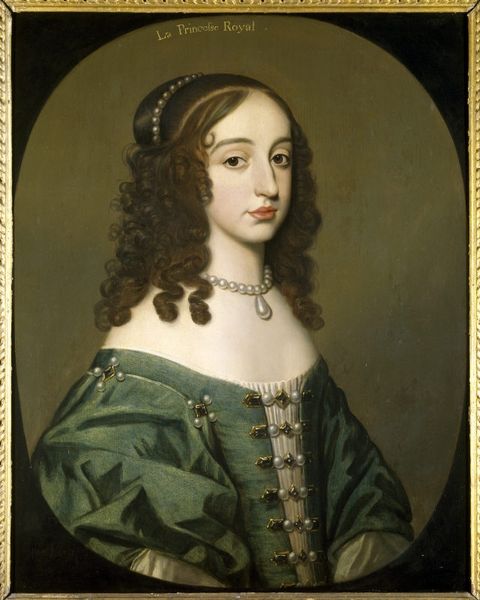
painting, oil-paint
#
portrait
#
character portrait
#
baroque
#
face
#
painting
#
oil-paint
#
portrait reference
#
portrait head and shoulder
#
animal drawing portrait
#
portrait drawing
#
facial portrait
#
portrait art
#
fine art portrait
#
realism
#
celebrity portrait
#
digital portrait
Copyright: Public domain
Gerard van Honthorst painted this portrait of Elisabeth Van Nassau-Beverweerd during the Dutch Golden Age. Elisabeth’s pearls, adorning her hair and neckline, symbolize purity and status, recalling a tradition that stretches back to ancient Rome, where pearls were emblems of wealth and power. Look at the brooch on her dress, a jewel encircled by pearls. This motif echoes the halo, seen across centuries in religious iconography to denote sanctity. From Byzantine mosaics to Renaissance Madonnas, the halo signifies divine status. Here, in Elisabeth’s portrait, it suggests a secular kind of reverence, an elevation of the individual through art. This isn't merely vanity; it's a reflection of the humanist spirit, imbuing the sitter with a sense of timeless importance. The echoes of religious art reverberate, subtly transforming a personal portrait into an icon. These symbols demonstrate how cultural memory shapes our perception, linking the present to a rich, layered past.
Comments
No comments
Be the first to comment and join the conversation on the ultimate creative platform.
